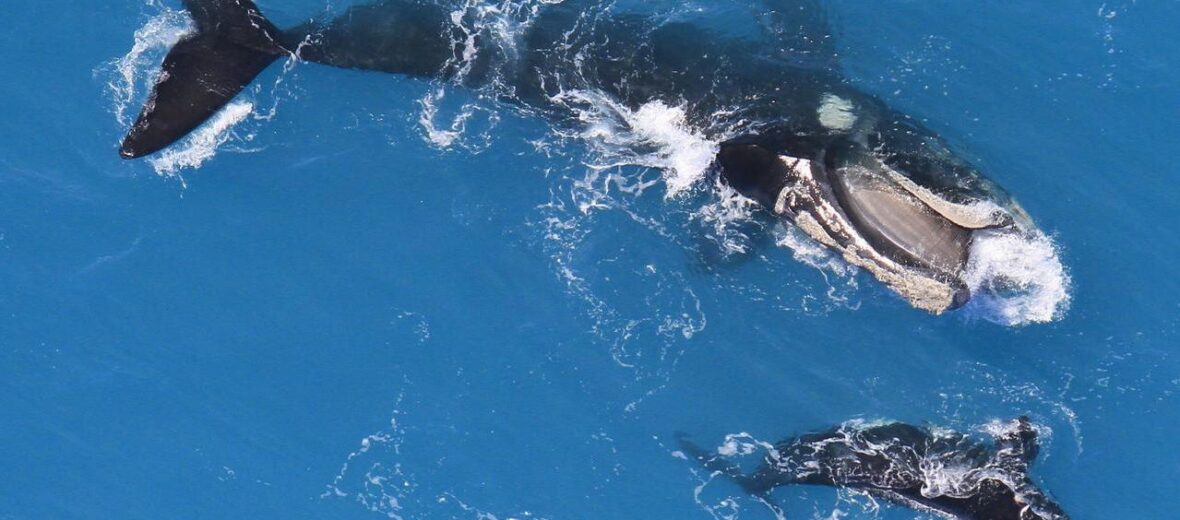
Whales are a critical component to the earth’s oceans. The southern right whale is no exception. These giants, like all other baleen whales, aid in the bloom of phytoplankton and krill when they (believe it or not) poop. Their feces is fed upon by phytoplankton which then blooms to then be consumed by zooplankton and thus begins the circle of oceanic life. Southern right whales are among the largest of the known whales and are under threat from shipping vessels that can sometimes strike these beautiful creatures, severely injuring or killing them. They are also threatened by overfishing and climate change. The IUCN currently lists them as Least Concern. Some populations remain listed as Critically Endangered.
First the Stats…
Scientific name: Eubalaena australis
Weight: Up to 51,000 lbs.
Length: Up to 47 feet
Lifespan: Up to 100 years
Now on to the Facts!
1.) Southern right whales prefer subtropical waters in the southern hemisphere.
2.) They are friendly and even playful with humans.
3.) The noticeable calluses on their skin helps researchers to identify each whale. They act almost as a fingerprint. These calluses can sometimes be up to 2 inches thick.
4.) Sadly, whalers came up with the name ‘right whale’ because they thought this slow, friendly species to be just the ‘right’ whale to hunt.
5.) These whales may be large, but they can actually breach almost totally out of the water.
But wait, there’s more on the southern right whale!
6.) The southern right whale communicates via vocalizations as well as flippering (slapping the water’s surface with their pectoral fins), lobtailing (slapping the surface of the water with their flukes), and sailing (lifting and holding the flukes above the surface, letting the wind push them through the water).
7.) Southern right whales amaze whale watchers with the way they look and in how they almost put on a show for the crowds, like headstands, spyhopping, blowing, body rolls, and breaching.
Did you know…?
They have the largest testicles of any animal. They can weight as much as 1,100 lbs! Hey, you’re here to get facts. Well, you get em.
8.) There are an estimated 12,000 +/- southern right whales spread throughout the southern hemisphere. This is down considerably from their initial 100,000 +/- before whaling of these beautiful animals began.
9.) Females birth a single calf that measures up to 18 feet long. They breed approximately every 3 – 5 years and the gestation (pregnancy) lasts up to 12 months.
10.) Predators of these whales include orca, large sharks, and humans.
Now a Short Southern Right Whale Video!
Also, check out the Critter Science YouTube channel. Videos added frequently!
Want to suggest a critter for me to write about? Let me know here.



